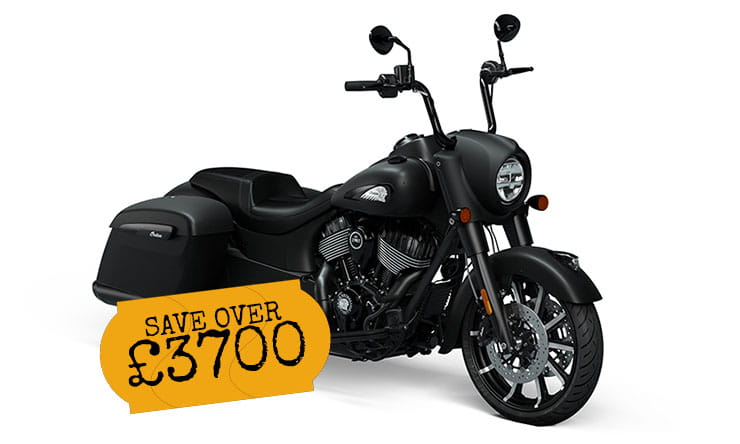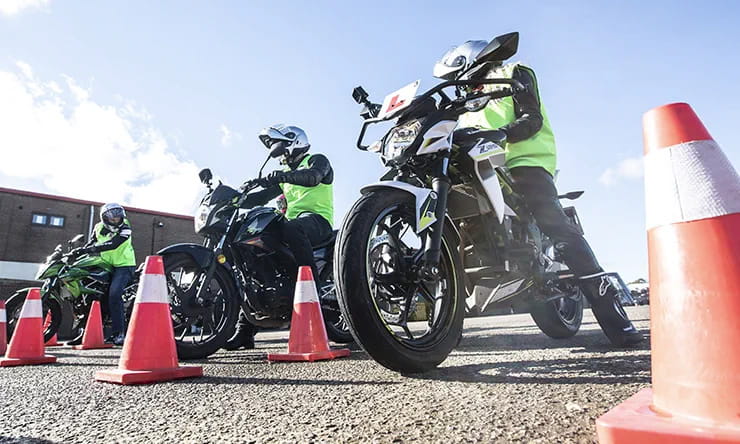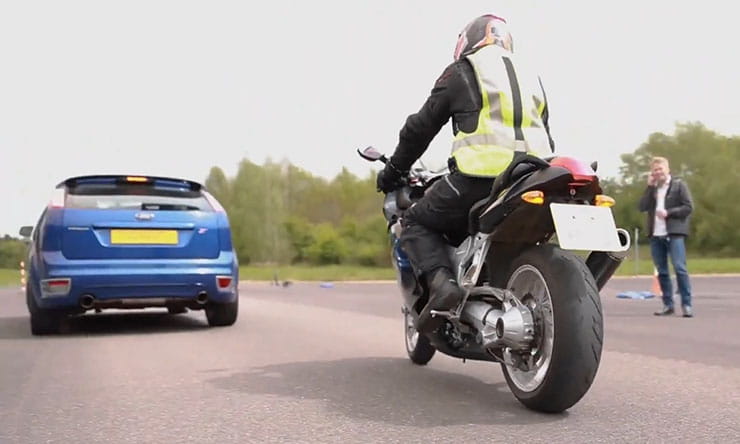Author: Phil Turner Posted: 30 Sep 2014
As the gasping finally stops and journalists at the Cologne motorcycle show put their eyes back into their heads, we take a look at the original Kawasaki H2, whose heritage has provided the template on which the incredible new Ninja H2 is based.
In the early 70's everyone had to have a 750 superbike in their range. Norton had the 120mph Commando, MV the 750S and Ducati the 750SS. When Kawasaki entered the fray with the Mach IV they tore up the rule book and the tarmac.
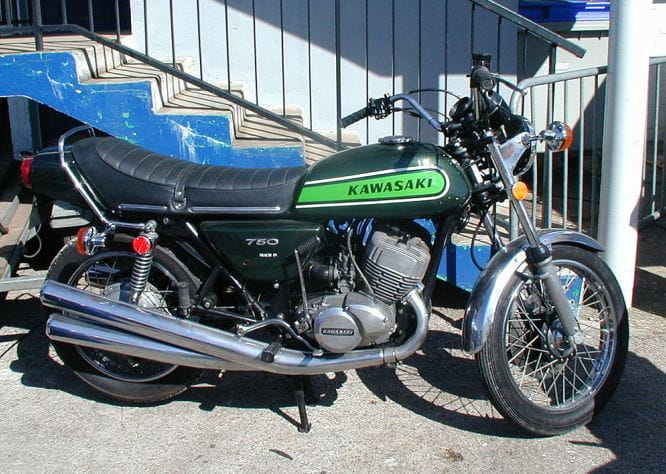
Kawasaki well and truly set their stall out in the H2 brochure in 1972, and they had good reason to: “We've just pulled a fast one on the competition. Named the Kawasaki 750cc Mach IV. Of all the world's production models, it's the fastest thing on two wheels. Faster than any Suzuki. Faster than any Triumph. Faster than any BSA, and Honda, any anything.”
The H2 was designed for one thing and one thing only: speed. Noise, pollution, fuel consumption, even handling were all afterthoughts.
With 60bhp on tap and weighing just 184kg, Kawasaki's 500cc H1 Mach III triple had set the benchmark for road bike performance, but the early 1970s were a numbers game, and the key number was 750.
The newly formed Formula 750 race series had every motorcyclist wanting to go bigger and faster, and every manufacturer clambering to help them. Norton had the 120mph Commando, MV the 750S and Ducati the 750SS. Kawasaki had to up their game, and up it they did.
Unlike the disc- and reed-valve two-stroke designs then coming on to the market, Kawasaki stuck to a piston-port design for simplicity and compactness. Three Mikuni 32mm carburettors provided the mixture, and Kawasaki's new Capacitor Discharge Ignition lit the touch paper.
It was a basic set up, but it worked. The Mach IV put out and eye watering 74bhp (its closest rival, the Triumph Trident, could muster only 58bhp) but weighed just 8 kilos more than the H1. The result was arm-wrenching acceleration and a blistering 126mph top speed. The industry, the press and the riders of the day hadn't experienced anything quite like it.
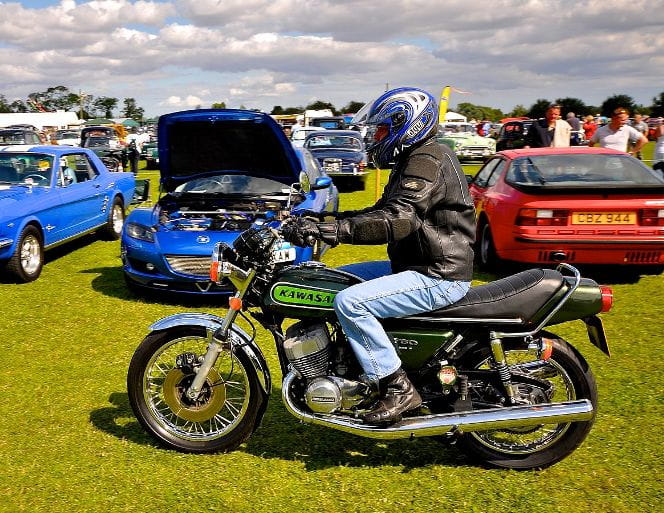
There was just one problem the H2’s lightweight tubular cradle frame was simply incapable of containing the vicious performance of the motor. It flexed under cornering, weaved horribly on uneven roads, making finding the right line and sticking to it almost impossible. Kawasaki fitted two steering dampers (one friction and one hydraulic) but they didn't make much difference.
On top of that, most of the Mach IV’s weight was over the rear wheel, which – combined with a short swingarm – caused the front wheel to go skywards, if the rider wasn't easy on the throttle. And that wasn't easy to do: the whole 74bhp was delivered in an incredibly narrow power band.
In the hands of an experienced rider, the Mach IV was the fastest production bike in the world, but with someone less skilled on board, it was an accident waiting to happen. It earned its nickname 'the widow maker' all too often.
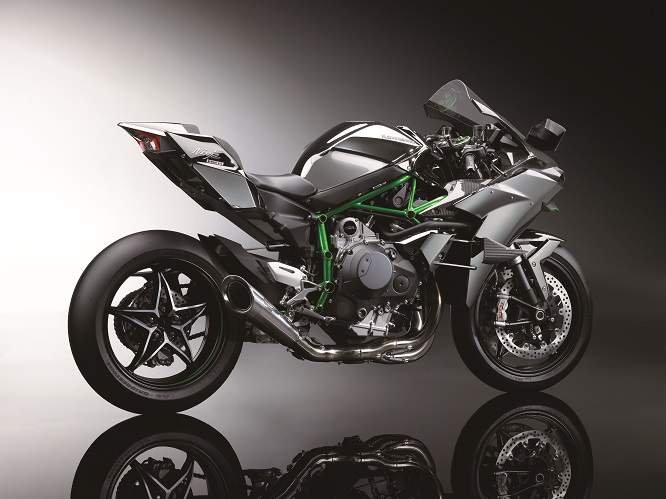
By 1974 Kawasaki had made a few chassis alterations and tweaked the motor to tame the terrifying power delivery, but by the standards of the day the H2 was a still a hooligan.
It wouldn't however be just it's reckless reputation that sealed the H2s fate. By the mid-70s the realities of an oil crisis', and increasingly strict safety, environmental and noise regulations meant the writing was on the wall for all the big strokers. The last H2 howled off into the distance in a haze of blue smoke 1975. The last of a generation.
Specifications: Kawasaki H2 750 Mach IV, 1972-1975
|
Engine
|
748cc, air-cooled, oil injected, 3-cylinder, two-stroke
|
|
Power
|
74hp @ 6800rpm
|
|
Torque
|
77.4 Nm @ 6500rpm
|
|
Trasmission
|
5-speed, chain final drive
|
|
Frame
|
Tubular steel, double cradle
|
|
Suspension
|
Front: Telescopic fork
Rear: dual shocks, preload adjustable
|
|
Wheelbase
|
1410mm
|
|
Seat height
|
795mm
|
|
Dry weight
|
192kg
|
|
Fuel capacity
|
17 litres
|
|
0-60mph
|
5.0secs
|
|
Standing ¼
|
12.3ses / 105mph
|
|
Top speed
|
126mph
|
Looking for motorbike insurance? Get your Kawasaki bike insurance quote today!






